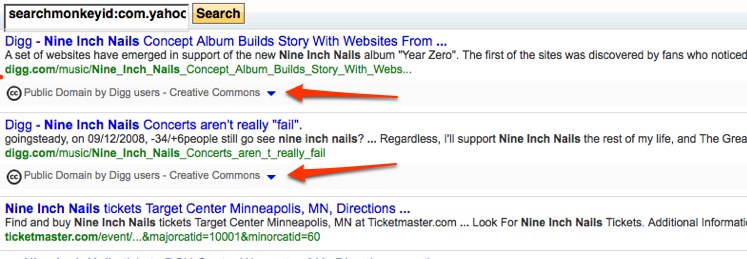I have sort of followed what the POWDER group is doing, but never spent enough time *actually* reading it and thinking about it.
![]()
So, what’s Yahoo! got to do with it?
What caught my attention was a recent blog post to the POWDER group about an outreach day hosted by Yahoo!. Hmmm… I thought. Why is Yahoo! interested in POWDER? POWDER is way to geeky, it lets you add metadata on top of metadata, blah blah blah… What good is it to a major Web player?
Well, they have been doing a lot with Semantic Web search (SearchMonkey — microformats, RDFa, RSS Data feeds) and they are a very forward looking company. So, something must be afoot.
Making the Web more relevant
So, I read the blog post, clicked on a few links and it dawns on me. POWDER is not geeky, it is about making the web more personal, more relevant and more trustworthy. All things *any* search engine would be keen on. And for that matter, any content provider; from small web publishers to the big boys and girls.
Individual Web users have a lot to gain from this as well. No longer are you restricted to “relevancy” within you social networks. And that relevancy can be dubious — closed social networks are not exacly the pinnacle of open information. No matter how big they are!
POWDER?
POWDER is a W3C initiative that allows you to describe online resources. What are online resources… well, anything that can be referenced on the Web – pages, documents, video, music, anything. Once the content is described it can be grouped and authenticated against claims that were made. Trust!
What can POWDER do?
Well it has many components; the ones that I think are highly relevant to the SitePoint community are:
- Grouping. Rather than mark up single items, treat them as content groups and describe them as a whole. This makes updating less painful and allows powerful ways to group content based on patterns.
- Download only if relevant. Don’t download the entire PDF or video if it isn’t the one you think it is. Maybe you want to print the PDF but it doesn’t allow printing – ignore the bugger!
- Profile matching. Does this have a mobile version? Is it accessible? NSFW? Kid friendly? If not, chuck it!
- Semantic annotation. Return results based on geo-location, disambiguate tags, what do you really mean?, etc.
- Trust. Automatically verify the claims made above, it it doesn’t meet your requirements, chuck it! :)
That’s fine and dandy, but so what?
Okay okay. How can you actually use this stuff? One example is embedding this information into your HTML via RDFa. It makes publishing POWDER information much more straightforward as it sits right along side the actual HTML.
What do you do now with all this lovely, hidden RDFa markup that is set to rule the world? You have two vehicles to readily consume this data, Yahoo! and Sindice — search engines that are globally indexing RDFa.
How can normal people use this?
Okay, you have a web of structured data. Great. You are one up on the competition — you *are* the Semantic Web. Great. You are a guru. The search engines love you, but how do you make this useful to the browsing public?
Use an enhanced search result from Yahoo!. Here is an example from the Creative Commons that is doing just that. Creative Commons have recently started to mark up their licenses with RDFa. So a search done on Yahoo can reveal that license information nice and easy.

Further possibilities
Imagine the above example showing the user that the search results are compatible with their screen readers, that the site is certified to follow accessibility guidelines or that it follows W3C mobileOK standards.
Not only can the search results highlight these things, the user can actually *restrict* their results to make sure these things are in place. Now that is powerful.
Oh, and in case you were wondering — POWDER stands for “Protocol for Web Description Resources”.


